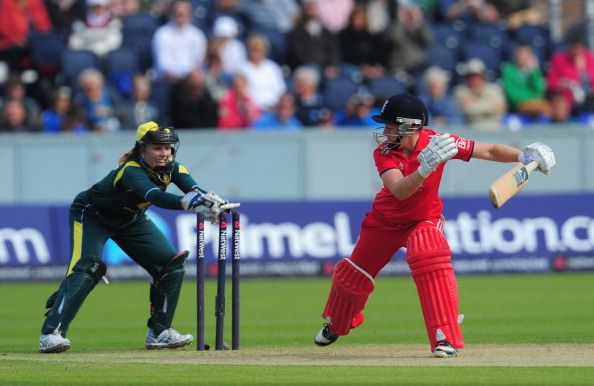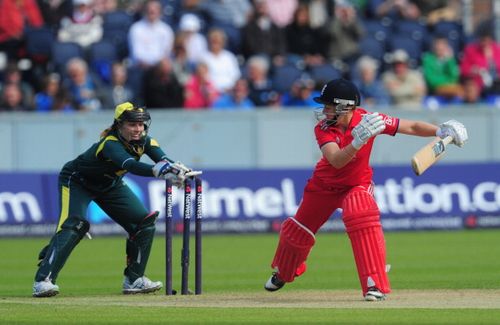
The Women's Ashes: How a new format has helped Women's cricket

England batsman Heather Knight is stumped by Australia wicketkeeper Jodie Fields during the Women’s Ashes Series
The recent Ashes series in which Australia were soundly defeated by England once again was an exhibition of the fact that Test cricket still commands a strong following in both these countries. But how many people know that another international Test match was being played in England along with this series?
The England Women and the Australian Southern Stars were locking horns, parallel to the men, in a one-off Test, as part of their Ashes campaign too. While the 4 day encounter ended in a competitive draw, the women’s Ashes campaign did not end there. Thanks to an ingenious new format for the women’s game, the possession of the wooden ball (the women’s version of the urn which contains a bat that was burnt in the Harris Garden at Lord’s in 1998) would no longer be decided by just a one-off Test, but by performances of the two sides over the whole bilateral series.
In a bold move to popularize the women’s game, the ECB and CA have collaborated to hold an Ashes series comprising of one Test, three T20 internationals, and three ODIs between the powerhouses of women’s cricket. While this may have given some sleepless nights to purists, for whom the Ashes will always remain in the realm of Test matches, the stratagem was a huge success with the public. With this move, the boards of the 2 countries have ensured that Tests will remain a part of all future Ashes series.
The system worked like this : A win in the only Test would earn a team 6 points while a draw would earn 2. Each T20 international and ODI win would earn 2 points, and one for a draw or washout.
In an age when no other countries play Test matches, this new format has revitalized the Ashes encounter, and has made it positively result oriented. Under the earlier system, the Southern Stars needed only a draw in the Test match to retain the wooden ball but here they were made to fight all the way down to the end of the tour. And it was the Charlotte Edwards led England team that came out on top, winning the T20 series 2-1, and the one day series 3-0.
The interest that this new format generated was palpable, with the English crowds and viewers getting into the act. They were now not just cheering for their country’s women’s team, but a second urn in the trophy cabinet. The fact that all the T20s were played as double headers before the men’s T20 clashes greatly increased the crowd and viewer participation.
The success of the women’s format points to the important role context plays in captivating audiences. The recent men’s T20 and ODI series that followed the Ashes is a recent example, with global interest fizzling out towards the end. Some cricket buffs I spoke to were completely unaware of the the ODI leg of the series.
The absence of a number of big names from both teams and inclement weather were certainly factors that contributed to this disinterest, but lack of context played a crucial factor. Having just concluded a series of national importance like the Ashes, the T20 and ODI leg were almost neglected; almost like a movie hall playing a three minute feature film after the credits of a blockbuster movie; only a handful of people would stay in their seats and watch, no matter how interesting.
With limited overs cricket, especially T20, being embraced by the world as the way forward for women’s cricket, this new format has now set the benchmark for all further women’s Ashes series. Things are looking good for the women’s game (at least in Australia and England), and Jodie Field’s Southern Stars will get a chance to settle the scores sooner rather than later in this back-to-back Ashes year.
Expect some high quality cricket down under from the ladies, and stay tuned all throughout; only at the end of the entire series will we know who will lift the precious trophy.